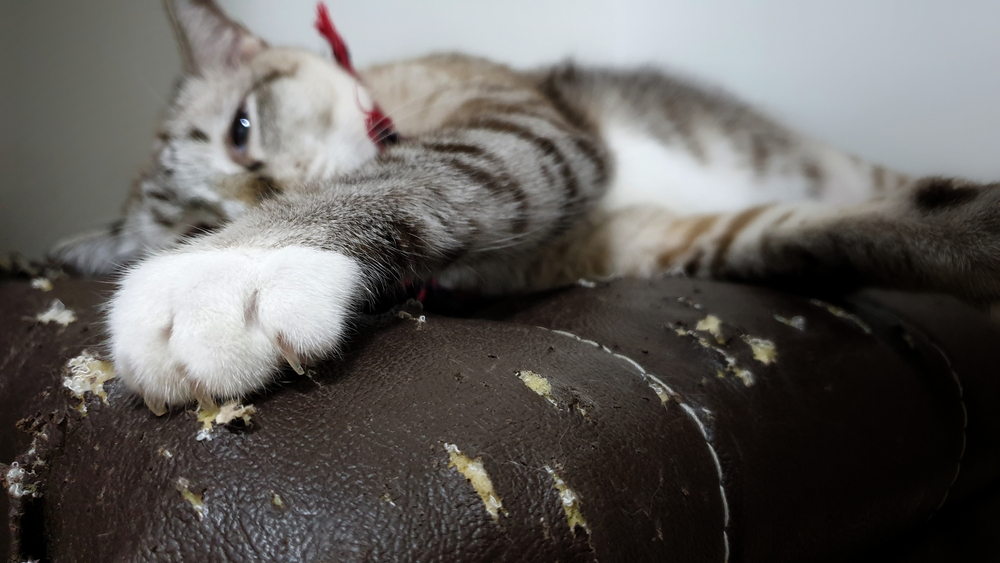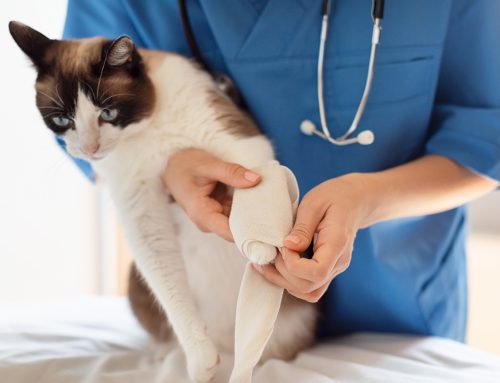When it comes to the topic of declawing cats, the phrase “When you know better, you do better” comes to mind. For years, the inhumane nature of declawing wasn’t common knowledge among pet owners. Fortunately, cat owners now understand that declawing is essentially the amputation of the last part of each digit and can cause lifelong—and painful—ramifications for your beloved feline.
Instead of declawing, the Providence Vet has five easy alternatives to keep your cat’s claws—and furniture—intact.
#1: Trim your cat’s nails regularly
Your cat might not be a fan of the procedure, but keeping their nails trimmed can help prevent inappropriate scratching.
- Start young — If possible, introduce trimming to kittens so they become comfortable with the process early on.
- Keep it calm and positive — Use feline-specific nail trimmers to prevent splintering of the claws, start slowly, and take breaks. Try to trim in a calm environment and provide positive reinforcement with praise, pets, and treats.
- Ask for help — If trimming your cat’s nails becomes too stressful—for them or you—ask your veterinarian for advice or a demonstration on how to trim their claws, or contact our team to schedule a nail-trimming appointment.
#2: Apply caps to your cat’s nails
Nail caps can be applied to the sharp tip of your cat’s nails as a protective shield while still allowing them to walk normally. Nail caps come in fun colors, are effective, and can last a month or longer, depending on how fast your cat’s nails grow.
#3: Provide plenty of cat scratching posts
Cats sometimes get a bad rap for what appears to be intentionally spiteful behavior (We’ve all seen the hilarious viral videos of cats behaving badly.), but they are not scratching your furniture to upset you. Scratching is a natural and necessary behavior for your feline companion and serves the following purposes:
- Dislodging old nail growth, exposing the new, sharper nail underneath
- Claiming their territory, along with releasing pheromones
- Stretching out their limbs (Think of it as the cat version of downward dog)
- Relieving stress (Excessive scratching can be a soothing technique for cats when they feel scared or anxious)
While your cat needs to scratch, they don’t need to shred your furniture. The key is providing and teaching your cat to use appropriate scratching surfaces. Corrugated cardboard, sisal, and wood are all great scratching materials to attract your cat. Provide vertical and horizontal options that allow your cat room to stretch when scratching. Invest in a quality cat tree for vertical scratching, and special carpet pads and cat toys that offer horizontal scratching.
The placement of scratching posts is important. Think about when your cat usually scratches, and decide on spots that correspond with their routine. Many cats stretch and scratch when they wake up, so consider placing a post near their sleeping area. To deter your cat from inappropriate scratching, place a post near undesirable locations, such as the oh-so-enticing couch corner.
#4: Attract your cat to appropriate scratching surfaces
Many cats love catnip, so use that to entice your cat to scratch on appropriate surfaces. Sprinkle dried catnip or spray catnip oil on your cat’s scratching posts, or try a product like Feliscratch, a synthetic derivative of the pheromone that cats release naturally from between their toes when they scratch. Both of these attractants will help reinforce positive scratching habits.
#5: Provide enrichment to alleviate your cat’s boredom

Often, destructive scratching is a sign that your cat has needs that aren’t being met. Without access to outlets to perform their natural behaviors and take part in social interactions with their human, your cat can develop behavior or medical conditions. Ensure your cat’s basic needs are met, and provide an enriching environment with plenty of opportunities to play, hunt, stalk, interact with others, and, of course—scratch.
If you’re struggling with a feisty feline who loves to shred, we can help. Contact our Providence Vet team for humane alternatives to declawing.






Leave A Comment